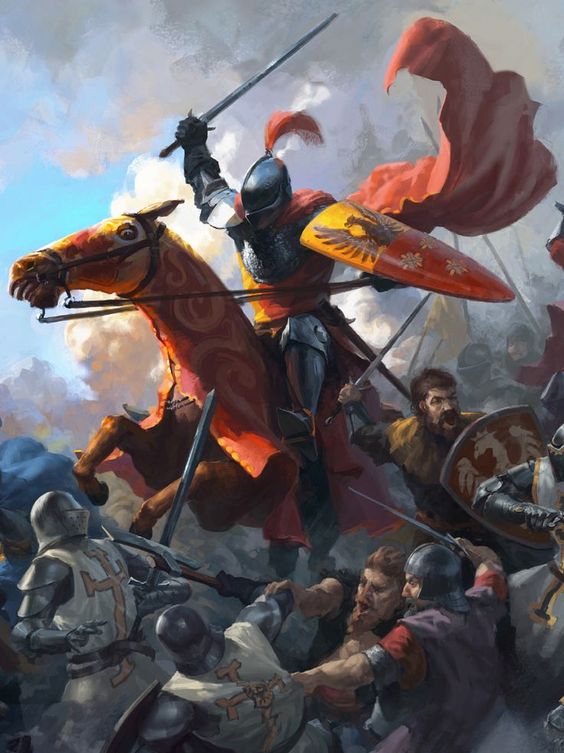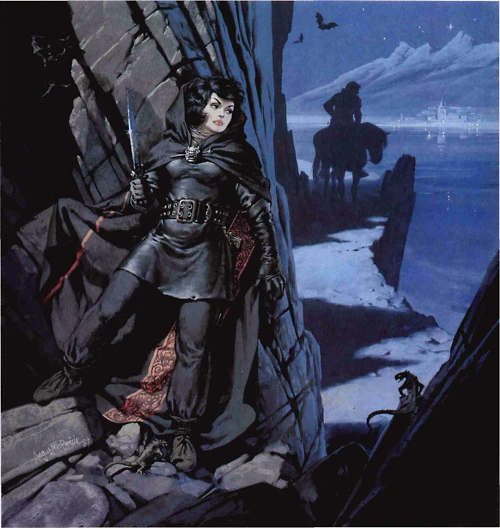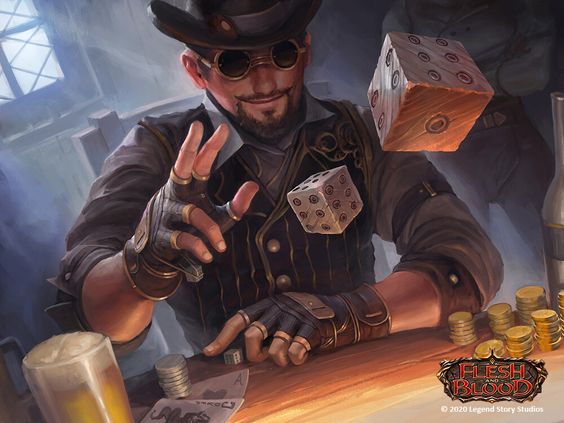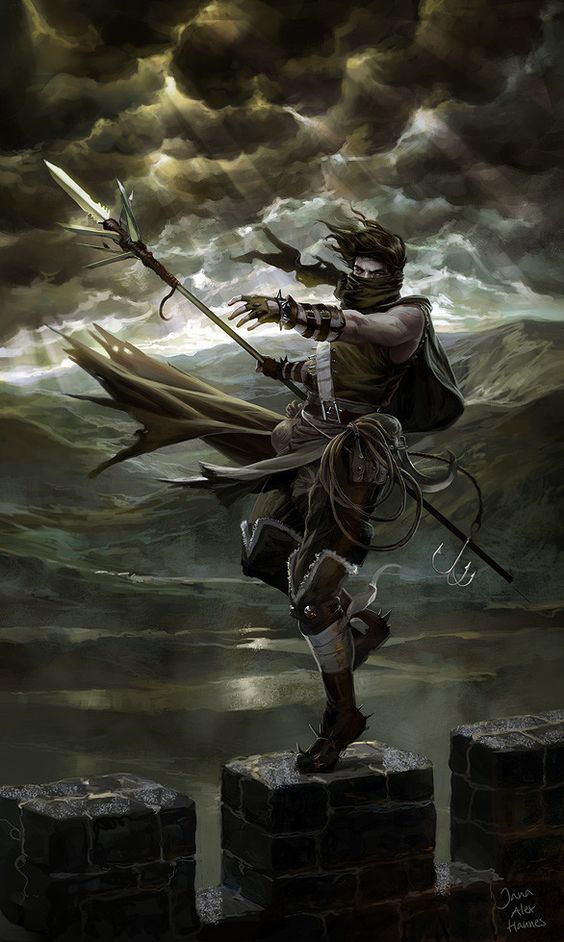D&D 5e: Cut Every Foe Down To Size With The Slasher Feat
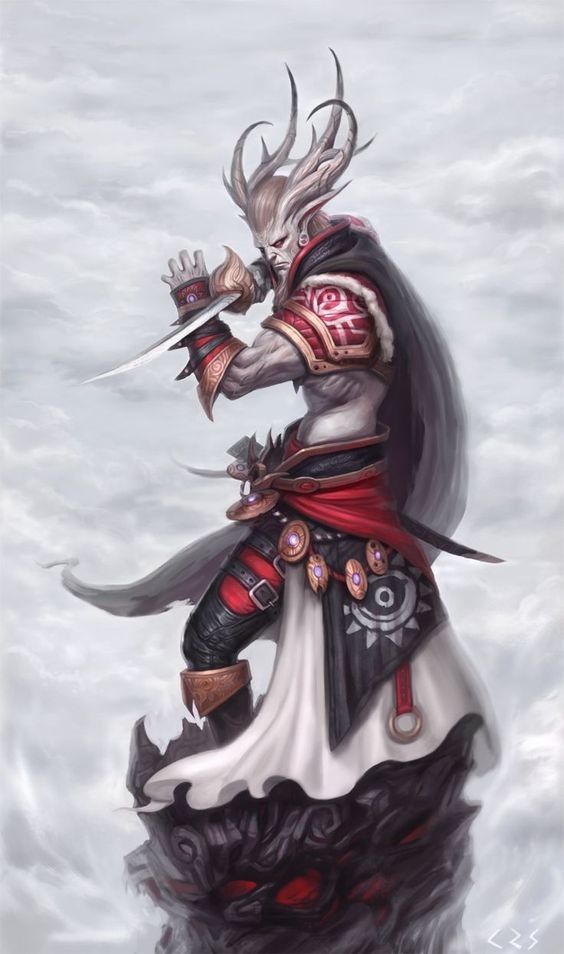
D&D 5e: Cut Every Foe Down To Size With The Slasher Feat
SOURCE: Tasha’s Cauldron of Everything
Rating the Benefits of Slasher
Benefit #1 –
Increase your Strength or Dexterity by 1, to a max of 20
Boost either of the primary combat stats. If you’re using weapons, you need to max one of these as quickly as possible.
Benefit #2 –
Once per turn, after hitting with an attack that deals slashing damage, reduce the speed of the target by 10
Automatically reducing a target’s speed isn’t the most powerful effect. But this can trigger every turn without requiring a saving throw and costs no resources beyond hitting with an attack
Benefit #3 –
When you critically hit a creature and deal slashing damage, the target has disadvantage on all their attacks until the start of your next turn
Disadvantage on all attacks for a turn is a strong effect, even if it is tied to something as unreliable as critical hits. Certain classes can lean into crits, and make much better use of this
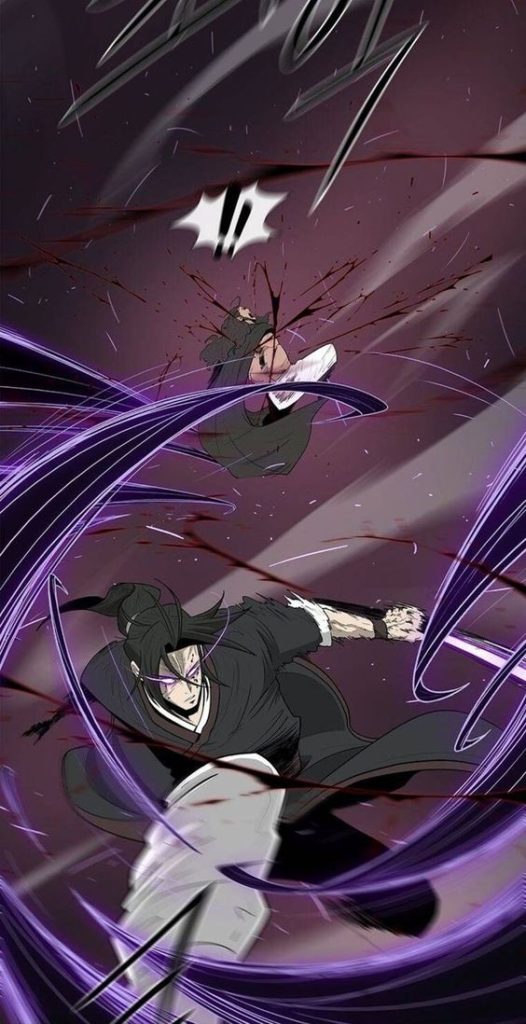
Mechanics and Requirements
Understanding How It Functions
The first thing to understand about the Slasher feat is that you have to use a weapon that deals slashing damage. The list of weapons that deal slashing damage is extensive, and includes many things that you’d expect, as well as several slightly odder choices that might not immediately spring to mind:
The list of weapons that deal slashing damage is extensive, covering many weapons that you’d expect: (Swords, Axes) as well as many that might not immediately leap to mind: (A lot of natural weapons like claws, etc.)
Weapons that qualify for the Slasher feat:
Simple melee weapons
- Handaxe
- Sickle
Martial melee weapons
- Battleaxe
- Glaive
- Greataxe
- Greatsword
- Longsword
- Scimitar
- Whip
Slasher Speed Reduction
The main section of the Slasher feat, and the part that’s probably going to see use in almost every combat round you take part in, is the built-in speed reduction on hit.
The way this works is simple:
- After hitting with any attack that deals slashing damage, once per turn you can choose to reduce the target’s speed by 10ft
- There is no save, no way to ignore this. If you hit and deal any amount of slashing damage, you can choose to apply the speed reduction
- The reduction is a flat 10ft, to all speeds the target has. This means any fly, swim, climb, or more exotic speeds the target might have are also reduced
- The reduction in speed lasts until the start of your next turn
- The speed reduction can be applied once per turn. If you have ways to hit targets outside of your turn, you can apply the effect again. It will not stack onto the same target but can be applied to multiple targets
The real question here is; is reducing an enemy’s speed actually useful?
The answer is: it depends. Speed reduction is difficult to rate because so much depends on enemy composition and encounter style. A lot of the time combats in D&D 5e degenerate into a brutal melee where no one moves until everyone they’re fighting is dead.
On top of this, in cramped environments like many dungeons, buildings, backstreets, and ships, a speed reduction isn’t going to make a lot of difference, as the remaining speed is going to be enough to reach and attack a target in the same turn.
That means, if you want this to work, you have to work for it. More on this later.
Disadvantage on Critical Hits
The second major part of the Slasher feat is conferring disadvantage on all attack rolls to a target for an entire turn after you hit them with a critical hit.
In a word, this effect is amazing. But only when it goes off.
Forcing an enemy to make all their attacks at disadvantage for an entire turn is generally tied to strong, save-based spells or abilities that are gated behind limited uses.
Big, hefty melee fighters or monsters that want to smash holes in the party can be shut down for entire turns by this ability, especially as there’s no way to resist it, including things like Legendary Resistances, which are normally automatic passes. If you land the crit, they have disadvantage.
The problem is, to activate this ability, you have to land a critical hit. Crits are inherently rare and unreliable in 5e. While there are a few ways to increase your chances to crit, which are detailed further down in this guide, this ability is not something you can rely on, or activate when it’s going to be the most useful.
You’ve also got to consider that chaff enemies, the kind that come in weak, gibbering hordes, probably just die when the big, burly Barbarian throws out a crit. I’m sure both halves of that goblin are really going to appreciate having disadvantage on their attacks.
On top of this, many enemies will have spells or abilities that they can switch to, instead of throwing out attack rolls, if they know that they’ve been made significantly less effective. Breath weapons, spell-like abilities, and even just grappling party members are probably all better options than swinging and missing.
With all that said, this is still a really good ability, especially considering it’s a secondary benefit. If you build into it, boosting your crit chance and damage, it’s something that might trigger once or twice per encounter, and that suddenly makes it much more interesting.
Key Stats
The Slasher feat lets a character boost Strength or Dexterity by 1, up to a maximum of 20.
This is useful. Both stats are your primary combat stats, dictating the hit chance and damage with every weapon in 5e, unless otherwise modified by class abilities or spellcasting. You probably already know what you’re boosting, but as a general rule of thumb, frontline fighters and melee warriors want Strength, and archers and the roguish, flanker types will want Dexterity.
Ideal Characters for Slasher
Top Classes
Barbarian – Great Weapon Master significantly boosts their damage output by capitalizing on their Rage-induced strength advantage, making those risky, high-damage hits more likely. Additionally, the bonus melee attack after a crit or kill just fuels the Barbarian’s battle momentum, adding more devastating blows to their repertoire.
The Path of the Beast is a vicious user of the Slasher feat. It literally grows claws that offer a bonus attack every single turn, just for using its Rage.
Fighter – Like anything to do with a weapon, Fighters are exceptional users of the Slasher feat. The base class has proficiency in every weapon that the feat uses, plus all of the Fighting Styles to really push it to the edge.
The Rune Knight makes great use of this, growing to size Large and sitting in the center of the battlefield, picking one target a turn to focus on. Alternatively, Echo Knights launch clones of themselves into combat, which can apply the benefits of this feat to whatever enemy is most vulnerable.
Druid – The base Druid class can’t do too much with the Slasher feat unless you want to go tangle with that Troll using your sickle. (Pro tip: Don’t do this.)
The Moon Druid subclass, on the other hand, can make massive gains picking the Slasher feat. Many Wild Shape forms deal slashing damage, on top of applying their own debuffs like prone or grappled. A gigantic, magical bear mauling you to death is terrifying enough. Every hit hamstringing you so you can’t even run away? That’s just worse.
Rogue – The Rogue’s melee weapon list is almost exclusively slashing damage (except the Rapier.) A melee Rogue who takes the Slasher feat can adopt a skirmishing style of combat, dashing in, hitting once for massive damage + debuff, then Cunning Action disengaging to safety.
A particularly weird, but effective build would be whips. 15ft range paired with finesse means delivering sneak attacks from 3 squares of safety. It doesn’t sound like it should work, but the build is brutally effective if the party plays defensive blockers.
Race or Subrace Choices
Bugbear – Increasing reach by 5ft in your turn is a massive and near-unique benefit for most melee characters. Bonus damage in the first round of combat also feeds into a hit-and-run combat style, which Slasher’s movement debuff works perfectly with.
Half-Orc – A character using the Slasher feat generally wants to fish for critical hits. The half-orc adds bonus damage on crits, making this strategy even stronger. The rest of the package is also great for the fighting types, providing a good skill, Darkvision, and ignoring death once per day.
Combos, Tactics, and Synergies
Complementary Feats
Polearm Master – Another feat that provides an out-of-turn attack, this one tied to an enemy moving within the 10ft reach of your polearm. The Glaive qualifies for this feat and is an all-around solid weapon.
A free bonus action attack is also great, for builds that don’t have access to those naturally, though do note this extra attack deals Bludgeoning damage, so doesn’t trigger the Slasher feat at all.
Shield Master – Slam your enemy to the ground as a bonus action after attacking. Standing costs half of their now much lower speed, which is one way to pin an enemy in place every turn.
Mobile – Taking a completely different tack, the Mobile feat allows a character to safely move away from someone they’ve attacked, plus boosts your speed. You’re faster. They’re slower. They also can’t take attacks of opportunity against you. Kite to your heart’s content.
Spells that Synergize
Bless – For the Slasher feat to be useful, attacks have to land. Bless makes that much easier, boosting attack rolls (and saving throws) for multiple party members.
Strategies for Maximizing Slasher Effectiveness
Stacking Slows
The slow effect from the Slasher feat doesn’t stack with itself. It doesn’t matter how many times you hit the target, or how many attacks you make outside of your turn, the feat provides a single instance of -10 speed.
However, what the Slasher feat can synergize with are different types of movement debuffs. For example, difficult terrain is perfectly fair game. Difficult terrain counts movement as double. So for every foot moved, you use two. A creature with 20ft of speed because of the Slasher debuff can suddenly only move two 5ft squares on the battle grid. That’s a much more significant problem.
Effects like Spirit Guardians, which halve an affected creature’s speed, are another potential source of debuffs. A creature hit by Slasher loses 10ft of speed, then halves the remainder, which generally drops speed into the 10-20ft levels.
If you can find another direct speed reduction (Ray of Frost and the Warlock’s Lance of Lethargy are both good examples) these do stack. For many creatures, laboring under a combined -20 to all of its movement speeds is essentially stationary.
Better still is the fact that all of these can be stacked atop each other, as long as the debuffs come from different sources. If your party runs heavy on control casters, Slasher suddenly becomes a very different feat.
Random Sources of Slashing Damage
Melee weapons aren’t the only sources of slashing damage. All of the below can apply the debuff from the Slasher feat:
- Throwing Axes allows a character to deal slashing damage at a range
- The whip is a 15ft range slashing melee weapon
- Racial unarmed attacks, like Aarakocra and Tabaxi claws
- Multiple Druidic Wild Shape forms
- The Path of the Beast Barbarian Subclass
- The Alter Shape spell’s claws
- Tabaxi unarmed attacks
Boosting Crit Chance
In 5e, it’s surprisingly tricky to push crit chance above the standard natural 20.
In previous editions of the game, it was common for weapons to have extended crit ranges, allowing critical hits on dice rolls of 18 and above, or even more with magical weapons. In 5e, many classes can only ever crit on a 20, with no way to boost this.
But there are ways to increase the amount of critical hits a build rolls. Here are the simplest ways:
- Making more attacks – The more dice you roll, the more often you can expect to roll a 20. Simple.
- Attacking with advantage – Making an attack roll with advantage pushes your chance to crit from 1 in 20; 5%, to 1 in 10; or 10%, effectively doubling crit chance. The Barbarian is the simplest way to do this. Their Reckless Attack feature allows advantage on all melee attacks from as early as level 2.
- Increasing Critical Threat range – The Champion Fighter and Hexblade Warlock can both increase their critical range. The Champion’s ability is easy to understand. Upon hitting level 3, all attack rolls critically hit on a 19 or 20. Once the character hits level 15, their attacks critically hit on an 18 to 20 instead.
The Hexblade instead has to use their Hexblade’s Curse ability, which increases their crit range against a single enemy, among other benefits, and can only be used once per rest. - The Lucky Feat – Three times per day, the Lucky feat allows a character to add another dice to an attack roll, apropos of nothing. You can even add a Lucky dice to an attack made with advantage, which means throwing three dice and critting on any 20.
- The Divination Wizard Subclass – After taking a long rest, the Divination Wizard rolls two dice, which are saved and can replace any attack roll or saving throw. If you roll a 20 here, that’s an instant crit, whenever you need it most.
Order of Scribes Slashing Damage
The Order of Scribes Wizard subclass can shift the damage type of their spells to any other damage type in their living spellbook. Spells that require an attack roll then qualify for, and trigger, the effects of the Slasher feat.
This is mostly useful for Eldritch Knight Fighters who multiclass into Scribes Wizard and allows them to continue fighting at range. The two basic spells which enable this are:
Cloud of Daggers – Level 2
The spells that qualify to change damage are:
- Acid Arrow and Scorching Ray
- Chromatic Orb, Ice Knife, Ray of Sickness, or Witch Bolt upcast to level 2
Blade Barrier – Level 6
The main spell that qualifies is:
- Upcast Steel Wind Strike
There’s an argument that states, RAW, any spell that mentions damage in its typing can be used to shift damage. If your GM agrees, that opens this combination way up. As always, check with your GM before building around niche cases like this one.
Final Thoughts on Slasher
The best way to describe the Slasher feat is that it’s aggressively fine. Especially when compared with its contemporaries; Crusher and Piercer.
The main problem is that the feat does nothing to directly increase a character’s killing power, instead applying a speed debuff that’s incredibly consistent, but surprisingly underwhelming in a lot of situations.
The turns where you land a crit and throw disadvantage on a big enemy will feel great, but they might be few and far between, especially if you aren’t able to increase your crit rate.
It’s also worth pointing out that Slasher throws a lot of bookkeeping at your GM, who now has to track who has lowered speeds, and who might have disadvantage. That’s not a problem, exactly, but it might start to get irritating after a while.
Long story short, while you’re never gonna feel bad about picking up Slasher, especially to support a fighting style you’re in love with, and the feat does do some cool things, it’s probably never the optimal choice, either.



